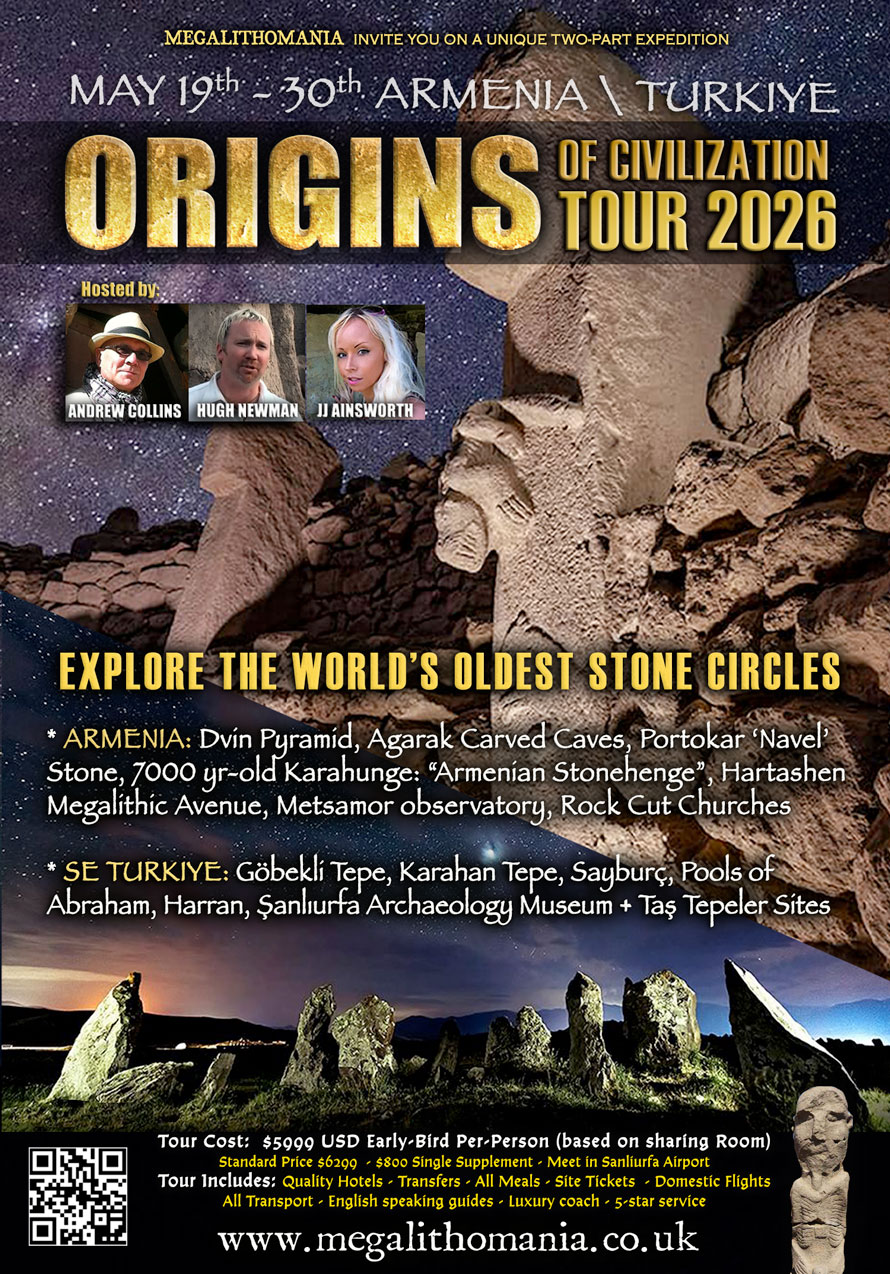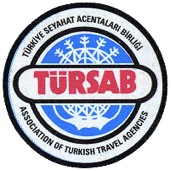Megalithomania presents
|
Please email nick@easternturkeytour.org for queries and further info, who can also arrange international & internal flights. |
Ancient Armenia - Karahunge and Beyond
Day 1 – May 19th - Arrival Day and Meeting
Arrive in Yerevan and check in to hotel. Group dinner and lecture/meeting in Hotel
Day 2 – May 20th - Hartashen Megalithic Avenue and Agarak
We will visit the megalithic monument near the village of Hartashen which were set up in three parallel rows of stones stretching for hundreds of metres. Large, uncut stones are placed one after another. Every stone is about one metre (3ft) high.Armenian academics have put an earlier date of 7000 to 5000 BC and it has been suggested that a river not far from the stones indicates a mystical relationship between the builders and the nearby water course. The longest part of the complex reaches the length of 600 metres (1800 ft).

On the way to Yerevan, we cross a high mountain pass and enter a hidden wilderness of mountain pastures carpeted with multicolor flowers and broad valleys lined by snowy peaks. It is here where we visit the archaeological excavations at Agarak are relatively recent, having started only in 2001. The main feature of the site is the exploitation by the builders of natural volcanic rock to literally form structures from the living rock. It is the only site of this type in the Armenian Highlands. Dating from at least the very early Bronze Age the site covers roughly 200 hectares and is largely ceremonial and ritualistic in nature and is associated with the Anatolian Earth Mother Goddess. Kibela or Cybele. Originally a Phrygian deity the cult of Kibela took on a variety of form and names and spread across the wider region, even as far as Rome where she was a cult exclusively followed and tended by women and known as the Great Mother. Various rounded and bowl-like “key” and “comet” holes, “labyrinths,” “thrones,” “altars” were carved on the surfaces of the complex producing what appears to be an extensive sacrificial and votive landscape.
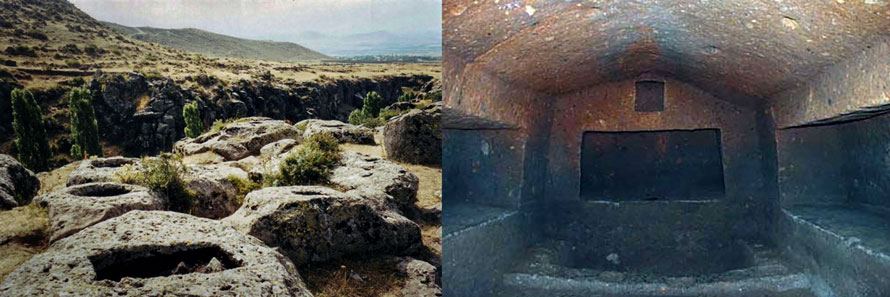
Day 3 – May 21st - Yerevan, Metsamor Stone Rows, Museum of History and Archaeology
After breakfast, we take a short City tour of Yerevan, then continue to Metsamor. The Metsamor bronze-age (roughly 4,000 to 3,000 BC) archaeological complex comprises several rows of menhirs (Vischaps), a bronze-age settlement and cup & ring stones. It is interpreted as an observatory. The Museum of History and Archaeology at the Metsamor Site was opened in 1968 and holds more than 22,000 artifacts, almost all uncovered at the site.
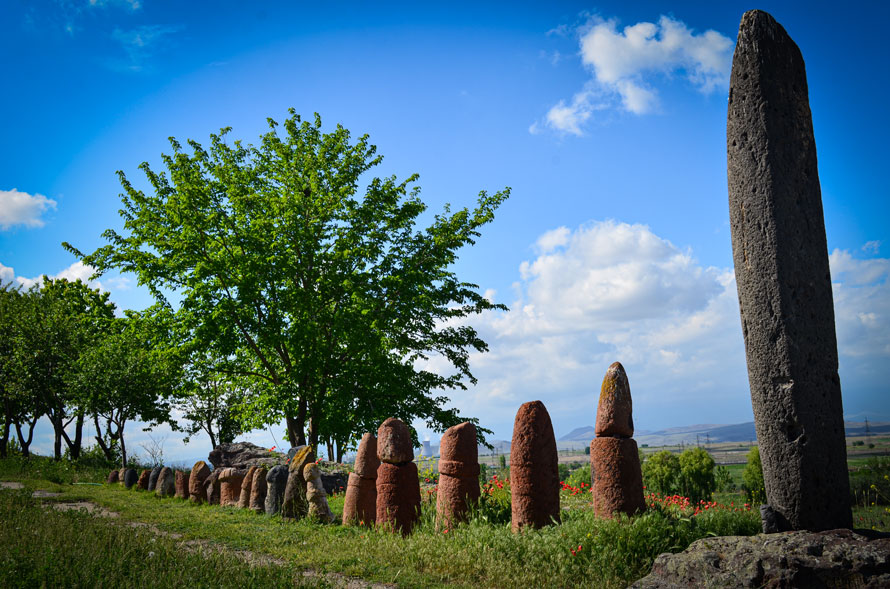
The only pagan temple, Garni is dedicated to the god of fireand the Sun Mithra was built in the 1st century AD. Garni is a magnificently preserved example of Hellenistic architecture. Not far from the temple, you can see the ruins of the palace complex, which served as the summer residence of the Armenian kings. Then visit a unique medieval monastery of Geghard which was included in the list of UNESCO world heritage sites. Some chambers of the monastery were carved out of solid rock and possess exceptional acoustics.
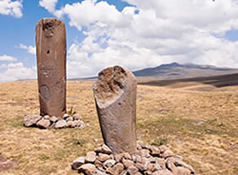 Dragon Stones |
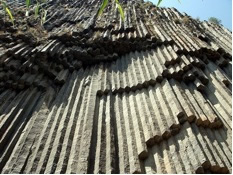 Symphony of Stone Formation |
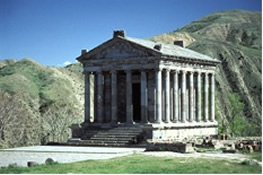 Garni Pagan Temple |
Geghard Monastery (IV century AD) is notable, first of all, for its unique architecture. Part of the church is carved into a large monolithic piece of rock. The name “Geghard” is translated as “spear”: it originates from the spear, which had wounded Jesus at the Crucifixion, allegedly brought to Armenia by Apostle Jude, called here Thaddeus, and stored amongst many other relics. A fragment of the cross on which the Lord was crucified is also kept here.
Day 4 – May 22nd - Karahunge Stone Circle Complex, Areni Cave Complex, Portakar
After breakfast we will leave Yerevan. The road leads through the plains of Ararat, into the flowing rivers, fascinating waterfalls, caves and snowy mountain peaks of Vayots dzor Province. On the way we will visit the Areni-1 cave complex in Areni village. In 2010, the earliest known shoe was found in the cave. In January 2011, the earliest known winery in the world was discovered. Also in 2011, the discovery of a straw skirt dating to 3900 BC.
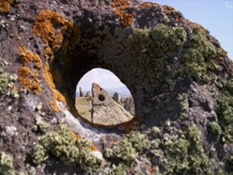 Karahunj Stone with hole |
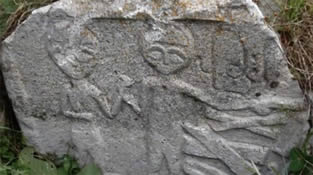 Strange humanoid carving |
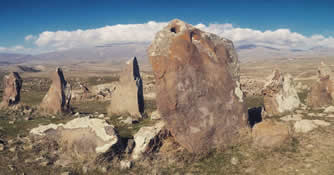 Megaliths of Karahunj |
On the way to Goris city we will visit Karahunge, a mysterious megalithic complex consisting of 223 upright stones weighing about 10 tons each. You can see holes in the upper part of the vast megaliths. According to the most popular theory, Karahunge is the oldest observatory, and the holes in the stones are made to observe the celestial bodies. The age of the monument is from 5 to 7 thousand years. Karahunge (also known as Zorats Karer) stands in Syunik Province, in the south of Armenia. Over a broad swathe of land, there are tombs and rows of megaliths dating back 7,000 years. The name Karahunge comes from two Armenian words: car, meaning stone, and hunge, meaning sound. Together they mean “sounding stones”, not unrelated to the fact that on a windy day they make whistling noises.
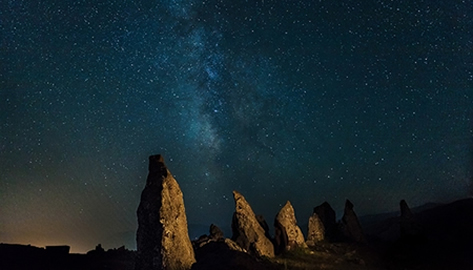 |
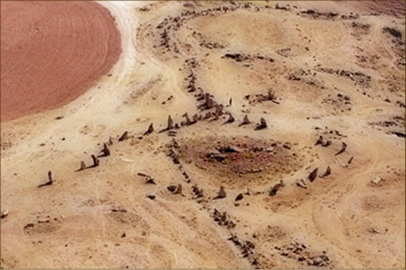 |
From Karahunge we will briefly stop to visit Portakar, a natural stone protrusion located above a system of caves. Pre Christian beliefs of this region, probably even before Armenians arrived, have Portakar, which means “navel stone,” as the centre of the universe and the place from which all of humanity sprang. There are many places around the world that have a particular importance to women and to fertility but this place surely must be amongst the oldest and the successive generations of supplicants over millennia has rubbed the stone smooth.

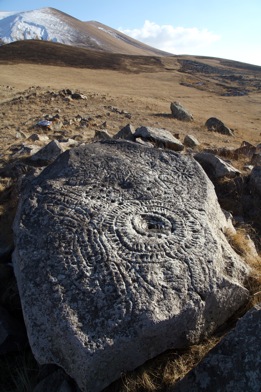 Day 5 – May 23rd - Tatev monastery, Observatory of Sevsar
Day 5 – May 23rd - Tatev monastery, Observatory of Sevsar
After breakfast we will visit Tatev monastery. The cable car to get there is called The Wings of Tatev and in October 2010 it was officially recorded by Guinness World Records as the world's longest non-stop double track cable car. After visiting the monastery of Tatev we will take the cable car back . Our trip is full of interesting sites and picturesque scenery. Selim pass has been known since the medieval ages when Silk Road was operating. We explore Selim Caravansary, a very well preserved monument of the 14th century, provides a spectacular view of mountain ranges.
Closer to the mountain of Sevsar we will start by jeeps to the Observatory of Sevsar to see an ancient star map carved onto the rock. Our final stop before arriving Yerevan of the day will be the “blue eye of Armenia” – lake Sevan. This fresh – water lake of volcanic origin is situated at an altitude about 2000 m. We will ascend to the top part of Sevan peninsula, where the Monastery of Sevan is located. This spot provides a wonderful view of the lake and if we are lucky we will witness the changing colors of the water. Drive to Yerevan
We will also visit Pyramid of Dvin, one of the most ancient settlements of the Armenian Highlands, an ancient capital of Armenia, going back as far as the 3rd millennium BC. A Late Bronze and Early Iron age period was discovered under the citadel of Dvin. Excavations revealed ancient workshops and worship structures from the beginning of the 1st millennium BC, with a metal workshop and four sanctuaries. The latter were large structures that had stone bases and walls made of unburnished clay. Flat roofs rested on wooden columns. Astonishing altar stelae of complex compositions, with traces of “eternal” fire and mostly black-polished utensils used at ceremonies were placed inside these sanctuaries built in the architectural traditions of Pre-Urartian (Araratian) dwellings. In the first half of the 8th century BC, Dvin and numerous settlements of the Ararat Valley were ruined due to invasions. Traces of a great fire and ruins that took place in this period are clearly seen from excavations in Dvin. It is a conical / pyramidal structure resembling Silbury Hill in Wiltshire, England. Farwell dinner at hotel.
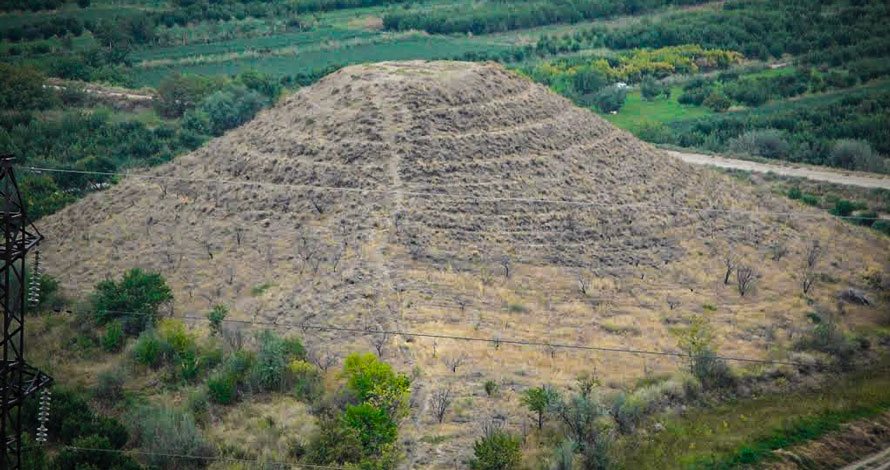
Day 6 – 24th May - Yerevan City Tour, Yezidi Temple and Cathedral, plus Monasteries
There are not many Yezidi Temples around the world and the most famous one is Lalish Temple, built-in 478 BC, located in Iraq.However, the largest Yezidi Temple in the world is called Quba Mere Diwane and it is located in Armenia’s Armavir region in Aknalich village. The interior of the temple is decorated with beautifully-colored marble stone details and carvings.In regards to Yezidi theology, one of seven angels in the religion looks like a peacock called Melek Taus, and the Yezidi Temple in Armenia is dedicated to it. In the temple area and inside of it, it’s possible to see beautiful peacock stone carvings, symbols, and symbols. There also is a lush garden, memorial park, and ceremony hall. We will also visit a remarkable monastery and complete the tour with a farwell dinner.
Day 7 – 25th May - End of Armenia Tour - Transfer to Türkiye
We get an early morning fklight to Istanbul then to Adiyaman to continue the tour to Southeast Türkiye
Southeast Turkey - Göbekli Tepe & Sanliurfa
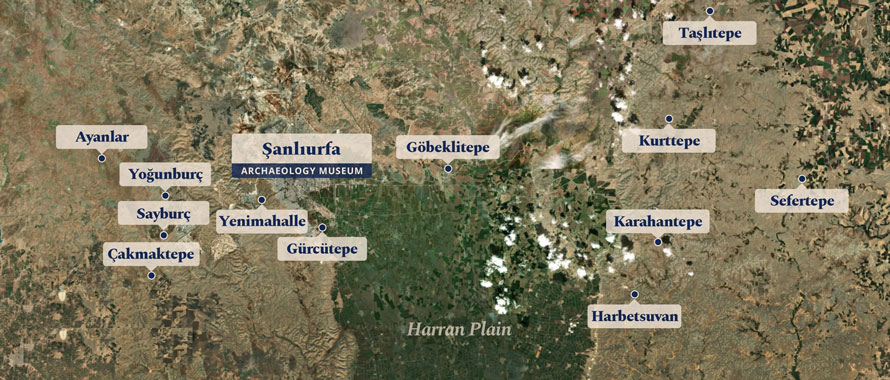
Day 7 – 25th May - Arrive in Turkiye and visit Mount Nemrut
We have arranged a specifially timed sunset visit to Nemrut Dagi (Nimrod’s Mountain), but on the way stop at Karakus Timulus and Cendere Bridge. Cendere Bridge is one of the world’s oldest bridges still to be in use, constructed during the empire of Septimus Severus. Composed of 92 stones, each weighing around 10 tons, it is thought to be the second largest Roman bridge still in existence, spanning an impressive 122 metres. The bridge today appears as a simple, unadorned arch, but was originally decorated by four Corinthian columns dedicated to Septimus Severus and his wife. Mount Nemrut is the site of the original Tower of Babel and Mountain of God of biblical tradition.
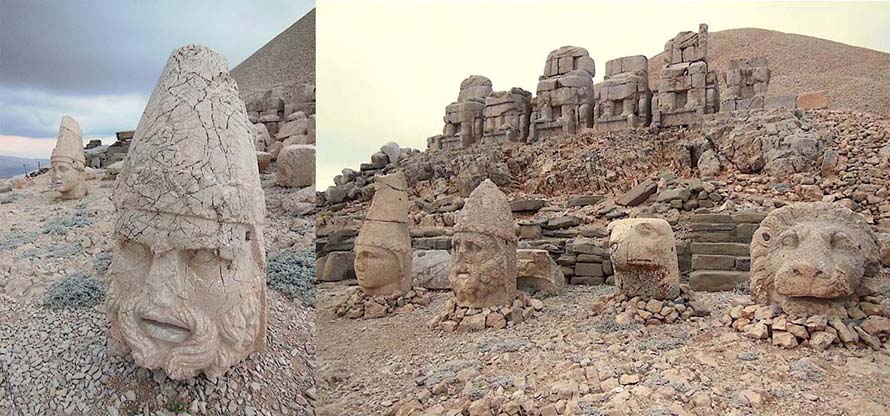
Gaze out over the terrestrial Paradise as enjoyed by the biblical patriarchs of the book of Genesis that is the perfect place to experience a sunrise or sunset. One of East Turkey’s most spell-binding attractions at the peak of this mountain (at over 2000m) sit enigmatic statues of a pre-Roman king, Antiochus I Theos of Commagene, and the various gods he believed to be his ancestors. The views from the summit are sublime. (NOTE it is a 20-30 minute walk up steps to reach the summit). Overnight Nemrut Hotel.
Day 8 – 26th May - Sanliurfa City, Pools of Abraham, Nimrod's Castle
Drive from Mount Nemrut to Sanliurfa. After lunch we will explore Nimrod’s Castle, the Pools of Abraham, and the birthplace of the great prophet and the Bazaar. The hotel is very close to this area. We will also visit the Pools of Abraham, and the birthplace of the great prophet. Urfa (a.k.a. Sanliurfa, “the prophet’s city”, or Edessa in ancient times) is the most spiritual city in East Turkey. It is a major centre for pilgrimage and its traditions are very much alive and well. The “Sanli-“ part of its name (meaning “great” or “dignified”) was awarded by the Turkish legislature in 1984 in recognition of the city’s pivotal role in the Turkish war of Independence. Of particular note for visitors are Urfa castle (the current walls were constructed by the Abbasids in 814AD), the Pool of Sacred Fish where Abraham was thrown into the fire by Nimrod, the park of mosques, the market area and Urfa museum.
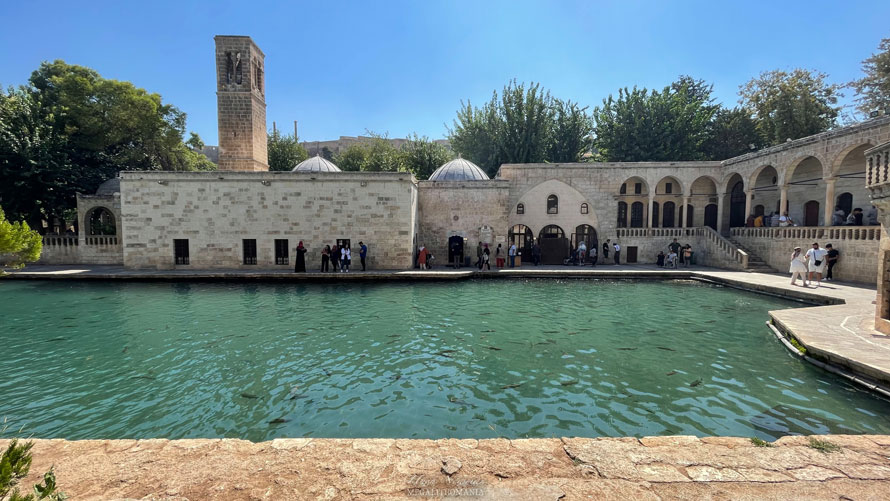
Day 9 – 27th May - Sayburç, Sanliurfa Archaeology Museum and other Tas Tepeler Sites
Sayburç has dozens of T-shaped pillars and a remarkable 'narrative panel' which is still under excavation, If possible we will visit the new excavations at Ayanlar Höyük and Çakmaktepe, both nearby.
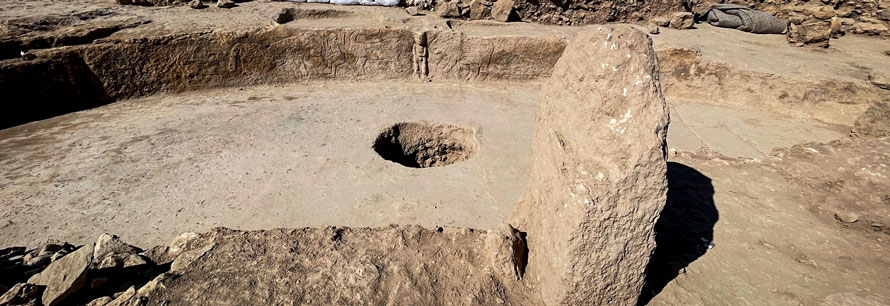
We will visit the stunning Sanliurfa Archaeological Museum to see display of compelling exhibition of artefacts from Göbekli Tepe, Karahan Tepe and Nevali Cori, including the mysterious bone plaque with an artistic image of Göbekli Tepe discovered on our tour in September 2015, pictured below (see video here). We also see a full size reconstruction of the original site on display.
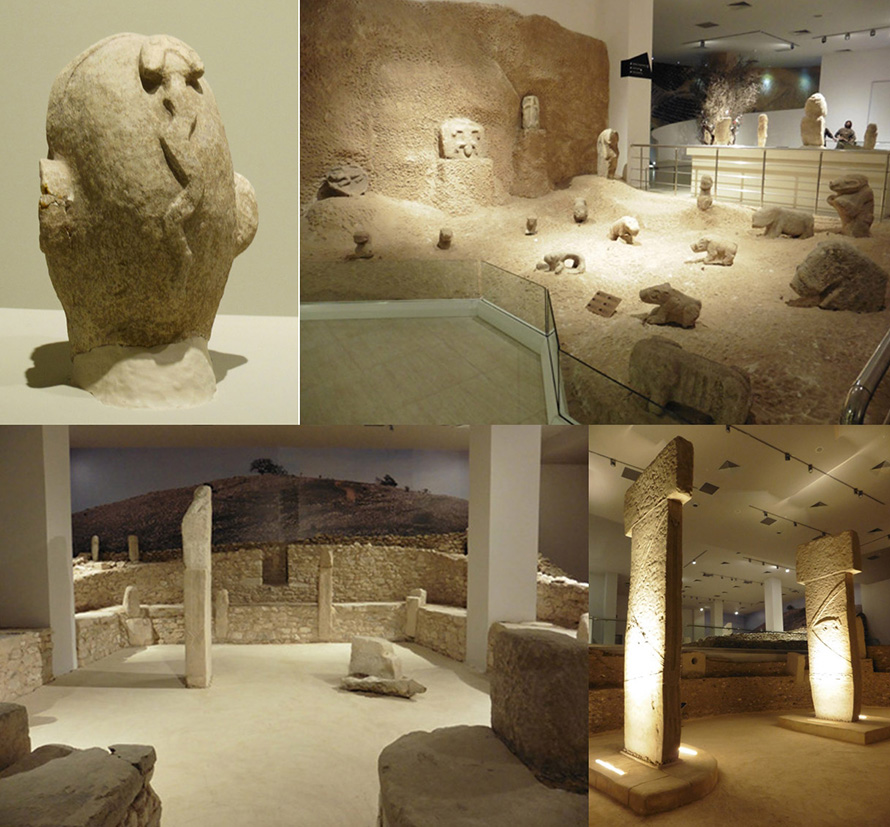
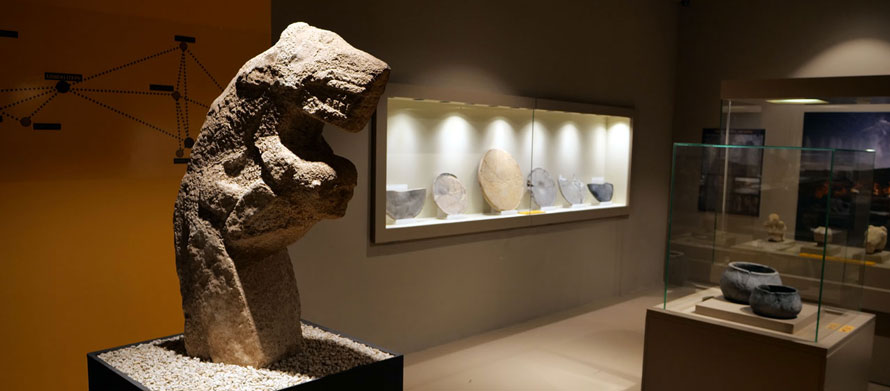
Day 10 – 28th May - Karahan Tepe, Sefer Tepe, Harran
We will explore the Tektek Mountains where we will visit Karahan Tepe, Göbekli Tepe's sister site, where some of the most extraordinary discoveries anywhere in the world are being made at this time. We explore its astronomically aligned stone enclosures and see its estimated 250 T-shaped pillars. Many of the site's more portable carvings are now on display at Sanliurfa archaeological museum. Hugh and JJ discovered a remarkable Winter Solstice Sunrise Alignment and you can watch the video here. Both Hugh and JJ have been visiting Karahan Tepe for many years and have developed a strong knowledge of its Pre-Pottery Neolithic culture. Now that it has been excavated, there are revelations here that could rewrite history. After lunch visit another Pre-Pottery Neolithic site, if it is open to the public, Sefer Tepe.
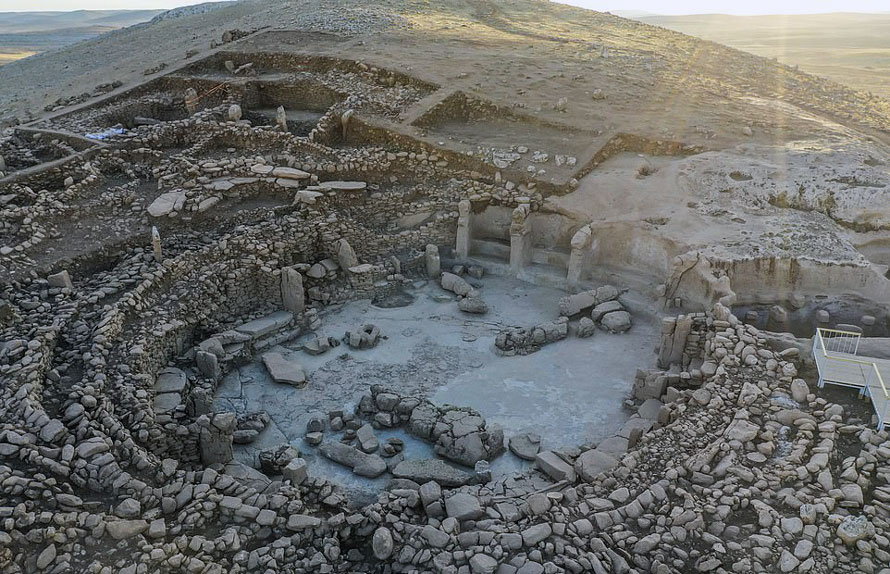
We will also take a pilgrimage to the ancient city of Harran, once the centre of Egypt’s Hermetic tradition. See its ominous Astronomical Tower, citadel and local village, and take in one of the most atmospheric sites anywhere in the world. Mentioned in the book of Genesis, Harran is believed to have once been home to the Prophet Abraham. The site of the first Islamic university in Anatolia, Harran also boasts the remains of an 8th century mosque, a citadel and some 300 year old beehive mud homes.
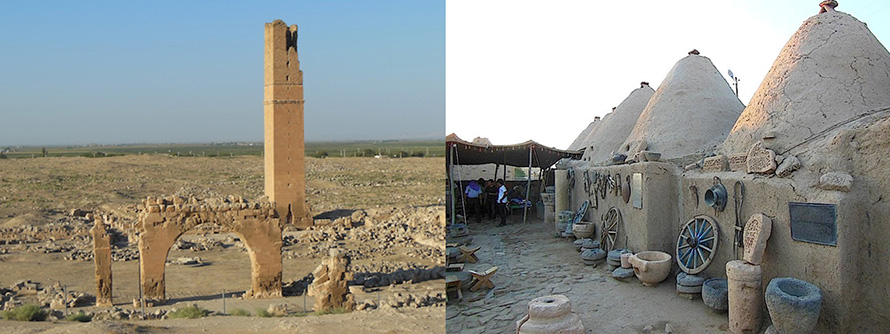
Day 11 – 29th May - Göbekli Tepe, The Caves of Sanliurfa, Tas Tepeler Sites
Today we visit the enigmatic Göbekli Tepe where the remains of the earliest religious structures built by man exist, constructed nearly 12,000 years ago, making it the oldest megalithic site on the planet. See its extraordinary rings of T-shaped standing stones with carved reliefs of birds, animals and other abstract forms. Learn its history and place in the origins of civilization. The site contains a vast array of circular structures and huge pillars, some with beautiful limestone carvings of lions, foxes, snakes and birds, believed to be gatekeepers of the entrance to the next world. There are striking similarities to sites in Peru, Bolivia and Easter Island that Hugh has written about in an article on Graham Hancock's website (read article here). To date less than ten percent of the site has been excavated.
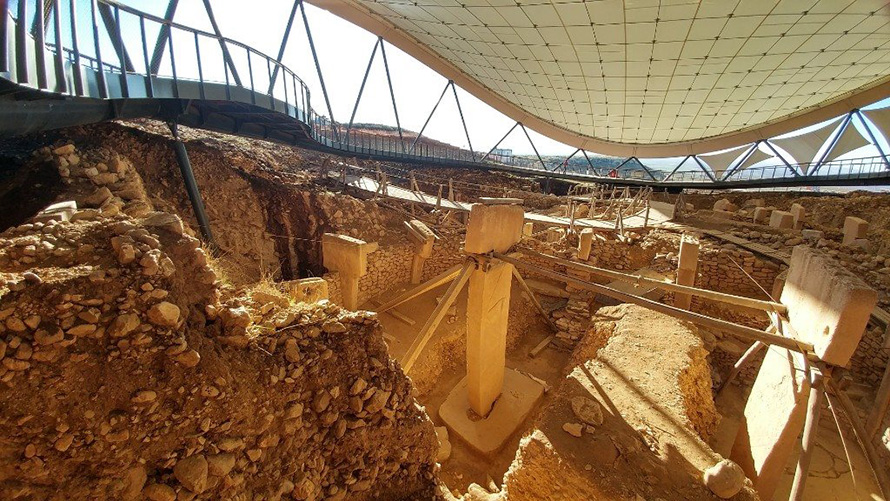
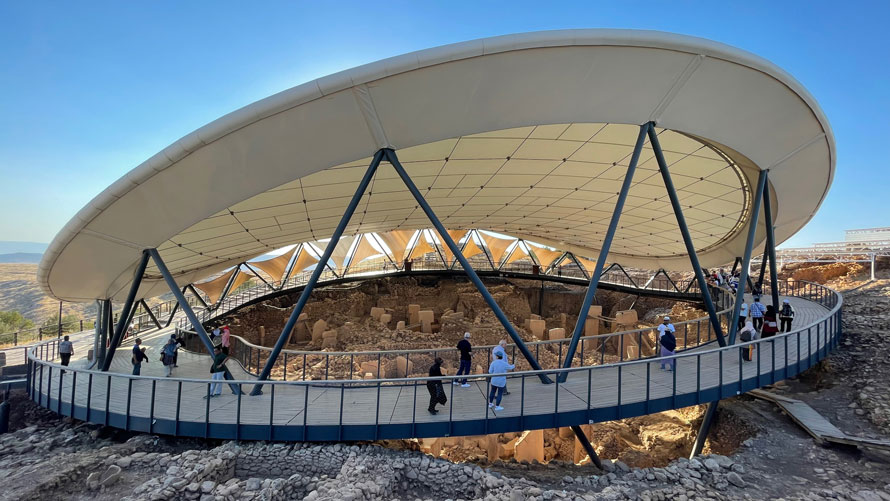
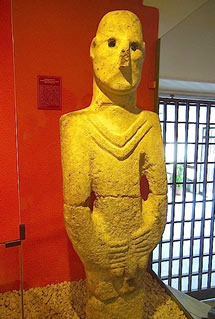 In the afternoon we will visit the Tas Tepeler site of Yeminihalle where the Urfa Man Statue was discovered and see cup-marks and ancient rock-cut wells overlooking the Pools of Abraham. It dates back over 11,000 years. We will also explore the ancient rock-cut caves of Sanliurfa which are located nearby. Farewell Dinner.
In the afternoon we will visit the Tas Tepeler site of Yeminihalle where the Urfa Man Statue was discovered and see cup-marks and ancient rock-cut wells overlooking the Pools of Abraham. It dates back over 11,000 years. We will also explore the ancient rock-cut caves of Sanliurfa which are located nearby. Farewell Dinner.
Day 12 – 30th May - End of Tour
Depart for home –Have a good journey!
Feedback from May 2023 Tour

"The Megalithomania Turkey tour has given me the best opportunity to discuss ancient civilization theories and ideas with like-minded people for almost two weeks, visiting sites I’ve only ever seen in videos and read about in books. With expert guides who promote and inspire guests to view these sites through a different set of eyes and with an open mind, this tour is unlike any other tour in this magnificent country. The bus rides through the vast historic countryside provided a wonderful backdrop to the fascinating conversations. This has been the best tour of my life. Thank you!" - G. Haynes, Australia
“The Megalithomania Turkey Tour is a once in a lifetime trip, not to be missed. Every day was filled with mind-blowing visits ranging from highly anticipated sites such asks Goebekli Tepe to unique surprises off the beaten path. The research, raucousness and rock n roll of the Mega Holy Trinity (Andrew, Hugh and JJ) combined with the passion and knowledge of our Kurdish guide Saba created a history journey of our dreams…on steroids. To top it off, we found ourselves in the delightful company of fascinating and accomplished seekers from all over the world. An experience that has reshaped our perspective on the origins of civilization and many other aspects of life.” Michelle Bouchard, UK
"I have thoroughly enjoyed this tour. It was much, much more than expected. Andrew, Hugh and J.J. are each experts, excellent resources, friendly and comfortable to be with. I was afforded the special honor and privilege to meet the Yazidis as well and I will never forget it. I will always cherish my memories of this unique adventure. I couldn’t have had a better experience in Turkey with anyone else"- Jodie Rowe, USA
Feedback from Eastern Turkey Tour 2025
I recently had the pleasure of joining the Eastern Turkey tour organized by the Megalithomania team, and I feel compelled to share my experience. Booking this trip on a whim turned out to be one of the best decisions of my life.The tour featured an array of incredible archaeological sites that truly amazed me, with each destination offering its own unique discoveries. The breathtaking landscapes we encountered throughout the journey left a lasting impression that I will always remember. Each travel companion brought their own perspective, enriching the experience and making every moment enjoyable through our shared discoveries. A highlight of the trip was the extensive knowledge shared by our organizers. Their expertise and enthusiasm for the region's history and culture deepened our understanding and appreciation of each site we visited, enhancing the overall experience. This journey was more than just a trip; it was an unforgettable adventure filled with discoveries that genuinely changed my perspective. I wholeheartedly recommend this tour to anyone seeking a meaningful travel experience and look forward to traveling with the Megalithomania team again in the future! - Kathy Erdmann - USA

"It was a great trip"- Graham and Santha Hancock, UK
"It was a fabulous journey with the best of company!" - Anu Nagappa, India
"What a fabulous trip - one which we will be integrating into our minds for some time."
- Terry Fitzsimmons, USA
"Thanks for a great Megalithomaniac Tour! The whole group gelled together with a great positive energy in this wonderful adventure."
- Robert David, USA
"Had a great though exhausting time on the tour. It was wonderful to meet Graham and Santha and hear his lectures, also to have the opportunity to share Andrew's passion for and knowledge of so much of interest to me. Others on the tour were very interesting and such good company - it's so good to travel with like-minded souls. So impressed with Arda' efficiency and patience!! It was all really well organised and I'm sure everyone enjoyed it all." - Christine Levy, Australia
Feedback from 'Gobekli Tepe Mini-Tour' in September 2015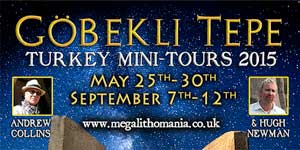
"Pat and I loved the Tour. We've never done anything like that before."- Harold White, USA
"Thank you Hugh and Andrew for a fabulous tour. The thing i liked best was the quality time we got at Gobeki Tepe and with each of you sharing your extensive knowledge. It warmed my heart to see how utterly enthralled Andrew is with Gobekli Tepe e as if he had lived there in a prior life and was coming home. It is one thing to enjoy and appreciate a historical site, but Andrew is in rapture. And his enthusiasm enhanced my appreciation too. My sister and I look forward to another tour with your team."- Colleen McGuire, USA
"Fantastic trip! Well organized with great guides and an fun group." - Bob Patterson, USA
"Many thanks to You and Andrew for a great trip." - Anthony Deleo, USA
INCLUDING: |
NOT INCLUDING:
|
|
Conditions:
1) All Paypal fees and international bank costs must be taken care of by the buyer. These will be added on final payment. We cannot take on these costs as we are keeping the prices right down to create an affordable tour.
2) Megalithomania cannot refund from 60 days before start of tour if you cancel.
3) Megalithomania will refund 50% if you cancel up until 60 days prior to the tour (this does not include deposit).
4) Megalithomania cannot refund deposits up to three months (90 days) prior to tour. Before that we can refund only 50% deposit if you cancel.
5) Megalithomania cannot be held responsible for any injury, accident or stolen goods - please get travel insurance and relevant visas before booking this tour and have a passport with at least 3 months past the end date of the tour.
6) Full payment and passport details must be received by March 1st 2025
7) Roommates: We are happy to try to and match our guests with a suitable roommate for those who are traveling alone. If we are unable to do this, you will be responsible to pay for the single supplement. Early registration will facilitate this process.
8) Please hold off booking your international flights, until the tour is confirmed in writing via email. We cannot be held responsible for any costs incurred. Please email for further details - info@megalithomania.co.uk
9) Itinerary may be subject to change if circumstances arise beyond reasonable control.
10) Megalithomania accepts no responsibility for losses or incidental expenses due to delay or change in schedules, hotel booking irregularities, defaults, accidents, sickness, quarantine, emergency, weather, strikes, war, travel restrictions, pandemics, or other causes. All such losses are the sole responsibility of the participants. Please make sure you have travel insurance to cover all this.
11) Force Majeure: Megalithomania LTD is not accountable; nor legally responsible, will not pay you any reimbursement if our obligations have been affected by any unforeseen circumstances that we are not able to avoid. Hereunder; we will list examples but not limited items of the force majeure cases: War, threat of war, terrorist activities, virus outbreaks, quarantine, pandemics, civil discord with its consequences or the risk of such activity, riot, airport closure, natural or atomic disasters, fire, chemical or biological disasters and adverse weather, sea, ice and river conditions, and/or similar occasions.
The tour is organised by Eastern Turkey Tours, a fully accredited travel agency - Alkans Travel - which operates a class "A" license under the auspices of TURSAB (Turkiye Seyhat Acentalari Birligi - The Association of Turkish Travel Agents). Under Turkish law legally established travel agencies must be a member of TURSAB before they are permitted to conduct travel agency business. In line with TURSAB standards our customers are fully insured. You will have the security of endorsement from Turkey's governing tourism body.
